The importance of instilling the concept of...

A preschool teacher shares 4 ways to use the KidsSoup ocean animal resources to build science, language, math, and art concepts.
Grade, Age Range or Specialized Learner: Multi-age, Preschool/Pre-K, 3-5 year old
Target Learning Skills:
Activity #1: Science – Collecting Data Using Charts
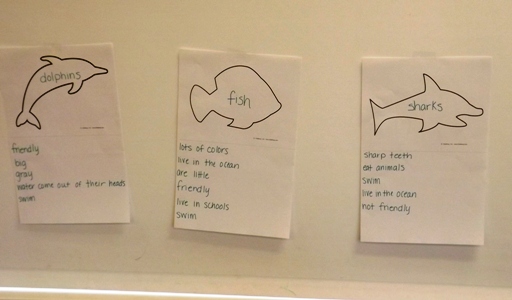
Copy the fish, dolphin, and shark from the KidsSoup resource library on large paper. If you are unable to do this, just attach the printed image to the top of a larger piece of paper. Write the name of each animal inside the body of the animal and use the space below the animal to write the data. We chose to write information we learned from non-fiction books we had read.
Another way to do this activity is to use one color to write down everything the children think they know about each animal, and later use a second color to cross off incorrect information as you gain more knowledge about the animals.
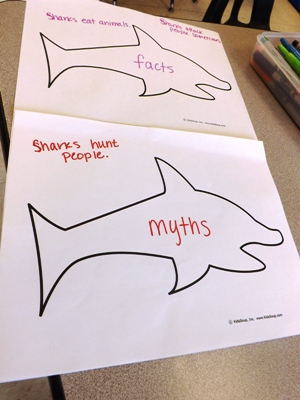
A third variation is to use multiple copies of 1 of the animals to make contrasting charts. For example, we read a book with things people believe about sharks and learned that some things are true and some things are myths. We printed 2 shark pages and labeled one “facts” and the other “myths," and wrote what we learned around the animal images.
Extension:
Learn more facts about each animal and let children write the information in the shark, dolphin, and fish writing charts.
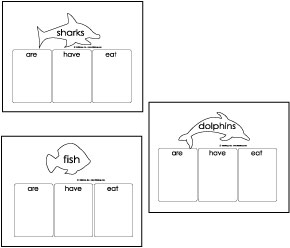
Activity #2: Literacy – Spelling (names or words)
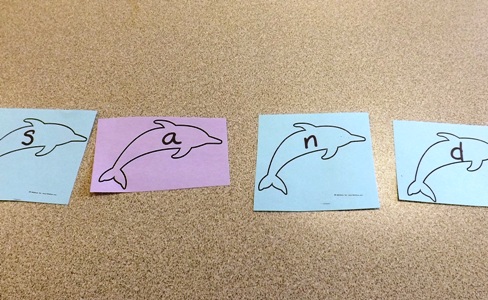
For this activity, print the b/w version of the fish, shark, or/and dolphin pattern printables and cut out. Depending on the age and/or skill level of your children, you can either write the letters of your students’ names or the letters of ocean words on each fish. Write one letter per fish; the name Joey would require 4 fish. To help children discriminate between consonants and vowels you can use 2 colors for the fish.
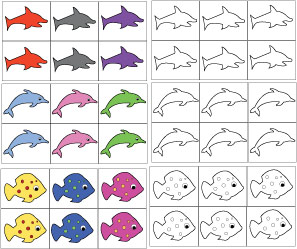
Shark, Fish, Dolphin Patterns
You can laminate the animals and keep them as a classroom set for the children to practice spelling their names or ocean words. You can use a dry erase board to show a word to a child and ask them to find the letters to duplicate it. Another version of this game is write the word with a missing letter, and ask children to locate the letter that is missing.
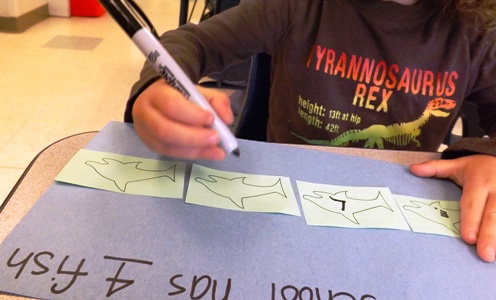
If you would prefer to have a finished product to keep for proof of a child’s ability to master spelling and/or writing his/her name or other words, you can do so by not laminating the animals. The child can glue the animals on to blue construction paper strips. Above is an example of a child who was able to count the letters in his name, glue them to the paper and then write his name.
Activity #3: Math – Patterning
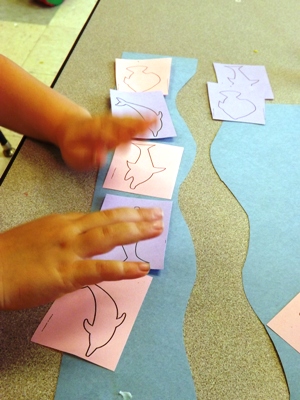
Print the colored version of the fish, shark, or/and dolphin cards or copy the b/w version of the ocean animal patterns on paper in different colors. Cut the animals apart. Spread the animals out on the table and have the children choose some to make a pattern. Show them that they can make a variety of patterns.
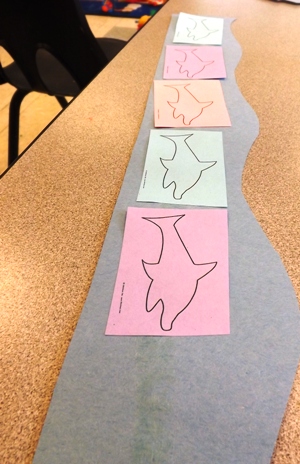
Once they have made a few, have them choose their favorite to glue on a strip of wavy blue paper. Younger children will likely focus on 1 attribute, while older children will be able to focus on both the color and type of animal.
Activity #4: Art/Sensory
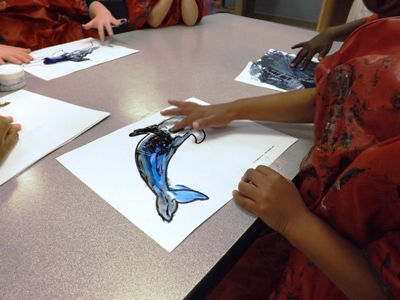
Provide each child with a copy of the dolphin or shark printable and containers of black, blue and white finger paint.
Encourage children to take small amounts of each color and blend them to create the color of a typical dolphin or shark. Once their animals have dried, you can display them along with the children’s products from the other activities on an Ocean-themed bulletin board.
Submitted by KidsSoup member Beth Steward
KidsSoup Resource Library